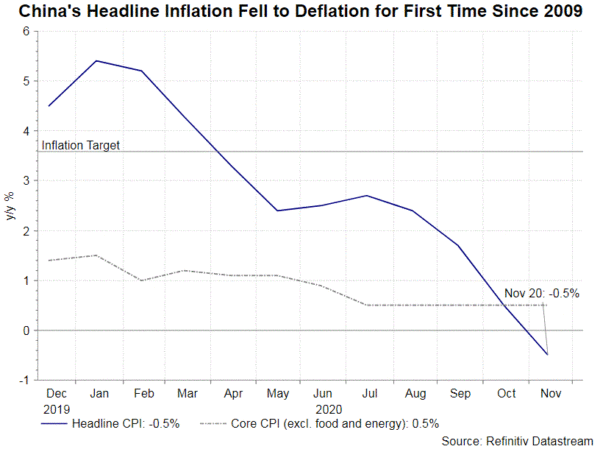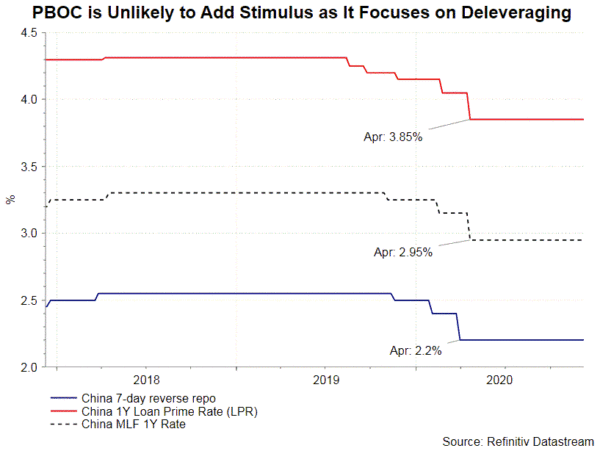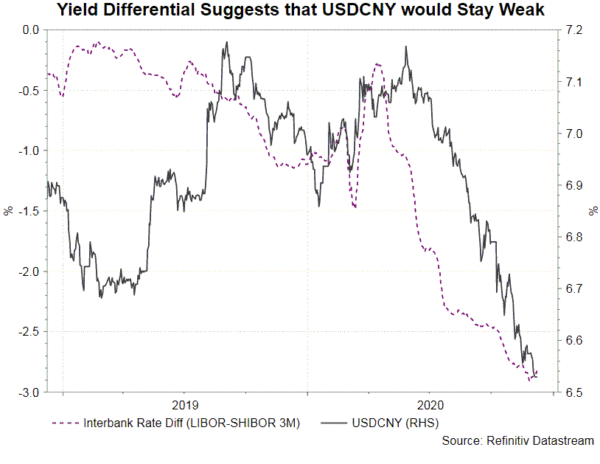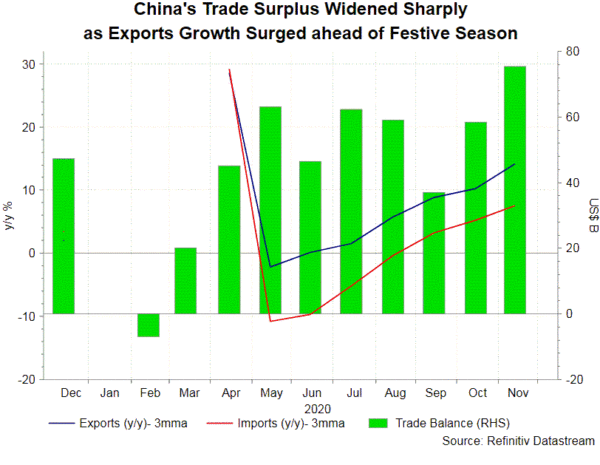The country recorded deflation for the first time since October 2009. Headline CPI contracted -0.5% y/y in November, compared with consensus of a flat reading and a +0.5% gain in October. Food inflation dropped -2% y/y in November following a +2.2% gain in October. Of which egg and pork prices showed the biggest decline, falling -17.1% and -12.5% respectively. Fresh vegetable prices rose +8.6% y/y, moderating sharply from +16.7% in October. Non-food inflation slipped to -0.1% y/y in November, from a flat reading in October. Core CPI, excluding food and energy stayed unchanged at +0.5% y/y. While staying in deflation, PPI improved to -1.5% from October’s -2.1%. The market had anticipated a milder recovery of -1.8%.
 Deflation is not a good sign to the economic outlook. It signals weakness in domestic demand, pointing to slowdown in production and subdued economic growth. In theory, monetary stimulus is needed to boost inflation. However, we do not expect PBOC to lower RRR or interest rates further as the government has shifted the focus to deleveraging and tightening of the property market.
Deflation is not a good sign to the economic outlook. It signals weakness in domestic demand, pointing to slowdown in production and subdued economic growth. In theory, monetary stimulus is needed to boost inflation. However, we do not expect PBOC to lower RRR or interest rates further as the government has shifted the focus to deleveraging and tightening of the property market.

 Separately, China’s trade surplus widened sharply to US$ 75.4B in November, beating consensus of 53.8B and October’s 58.4B. Exports jumped +21.1% y/y, accelerating from +11.4%. Imports growth, however, eased to +4.5%.
Separately, China’s trade surplus widened sharply to US$ 75.4B in November, beating consensus of 53.8B and October’s 58.4B. Exports jumped +21.1% y/y, accelerating from +11.4%. Imports growth, however, eased to +4.5%.
Geographically, exports to the US jumped +46.1% y/y in November, following a +22.5% growth in October. Export growth to ASEAN also accelerated to +10% y/y from +7.3% in October. Exports to EU expanded +8.6% y/y in November, after contacting -7% in the prior month. Shipments of pandemic-related goods expanded last month, resulting from the resurgence of coronavirus cases globally. Exports of textile & fabric goods rose +21% yy, up from +14.8% in October. Meanwhile, exports of plastic articles jumped +112.9% y/y, following a +97.9% growth in October. Regarding working from home-related goods, exports in automatic data processing machines accelerated to +34.3% y/y in November from +26.7% in the prior month. Meanwhile, exports of plastic articles jumped +112.9% y/y, following a +97.9% growth in October.
On imports, growth of integrated circuits demand eased to +13% y/y in November from +13% a month ago. Increase in iron ore imports decelerated to +43.4% y/y, from +46.7% in October. Crude oil imports contracted -34.4% y/y, following a -36% decline in the prior month.
The sharp widening in trade surplus in November was driven by the strong rise in exports. This could be driven by front-loading of demand amidst concerns over the possibility of further lockdown measures. For now, we believe the strength in exports was an one-off event, rather than a trend in coming months.















